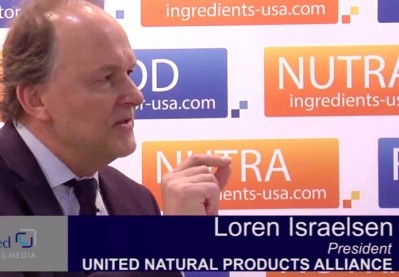Fine print of GMP compliance still a mystery to many small manufacturers, expert says

Rick Soltero, president of InstantGMP, a software solutions and digital records contractor based in Cary, NC, said in his work with the smallest tier of companies, his target market in the dietary supplement realm, he has observed that big gaps in understanding remain.
“There are a lot of firms that have a long ways to go,” Cary told NutraIngredients-USA. “A few years ago, if you were to ask the question, ‘Are your products made in a GMP-compliant facility?’ the answer of 90% of firms would be no. Now the answer would be 90% yes. But the understanding of what having a fully GMP-compliant facility means hasn’t changed very much during that time.”
Documentation failures
When an inspector enters a facility, the conditions he or she actually observe are of a course a key element in determining the outcome of an inspection. But even if there is nothing amiss, that’s not enough. At the heart of GMP compliance is a company’s ability to demonstrate via documentation that the correct procedures are being followed all the time, and that all of the company’s employees, even those that might not be there on the day of the inspection, are properly trained so that there is a reasonable expectation that those procedures will be followed regardless of who is at work on a given day. The old adage applies: If you don’t write it down, it didn’t happen.
And writing is still the dominant documentation method for most small firms, Soltero said.
“My guess is still at least 90% of small companies are still doing things on clipboards,” he said.
Soltero’s company seeks to take the complexity out of GMP compliance via software modules and standardized computer forms to guide companies through the process.
“We do a lot of demos with smaller companies. They believe they are doing things right because they have been putting out a quality product all these years. But less than a third of them really understand the difference between a batch record and a master manufacturing record. They don’t understand what it means to have a qualified supplier, or a qualified vendor. I had one company owner tell me his facility was GMP compliant because you could eat off the floor and if you climbed into the rafters you wouldn’t find a single cobweb,” he said.
Qualifying suppliers
Take the issue of qualifying suppliers, for example. Soltero said far too many companies still liken this idea to that of having a trusted business partner. You have successfully done business with a given company for years without problems and a certain trust has built up within that relationship. Does that mean that company is a qualified supplier? Not as far as FDA is concerned, Soltero said.
“In the final GMP rule how you qualify your supplier is a little vague. It is left up to the individual company. We have a process you go through and we have a form for that, a questionnaire for the supplier. Based on the answers to questions about their GMP compliance and quality programs, you can get a good feel for where that supplier stands. The next step in a on-the-ground audit, and we have consultants we can refer companies to for that piece,” he said.
Cost savings
The costs of GMP compliance are a frequent complaint heard in the industry. Soltero said many smaller companies are not even fully aware of how much all that clipboard time is really costing them. Installing a digital system such as a the one his company offers does have some upfront and ongoing costs, but it saves money in the long run, he said.
The savings are especially notable in the quality control process, he said. In a GMP-compliant process a quality manager has to verify that all of the stuff that supposed to be in the bottle is actually in there before a product batch is released. In a paper based system, part of this process involves going into the warehouse to make sure the records of what materials were withdrawn from certain hoppers or bags match with the records of what went into the mixer or tablet press as the lot in question was being manufactured. In Soltero’s digital system, that information is gathered in real time as warehouse workers and machine operators record information in every step of the process. The final quality report can be done in minutes as opposed to days or weeks, he said. The savings come not only in employee time, but also in speed to market and reduced inventory costs.
Competitive differentiator
While the current situation is lamentable, with many companies being cited in warning letters as lacking basic documentation such as proper master manufacturing records or batch records, Soltero said the situation is slowly improving. In his view, the GMP compliance picture is slowly shifting from being viewed as an obligation to be grudgingly borne to a potential market differentiator.
“We are seeing a change in the market from when people didn’t understand that they had to do it to now understanding that they must. The next change is that they realizing they have to be GMP compliant in order to be competitive,” he said.














